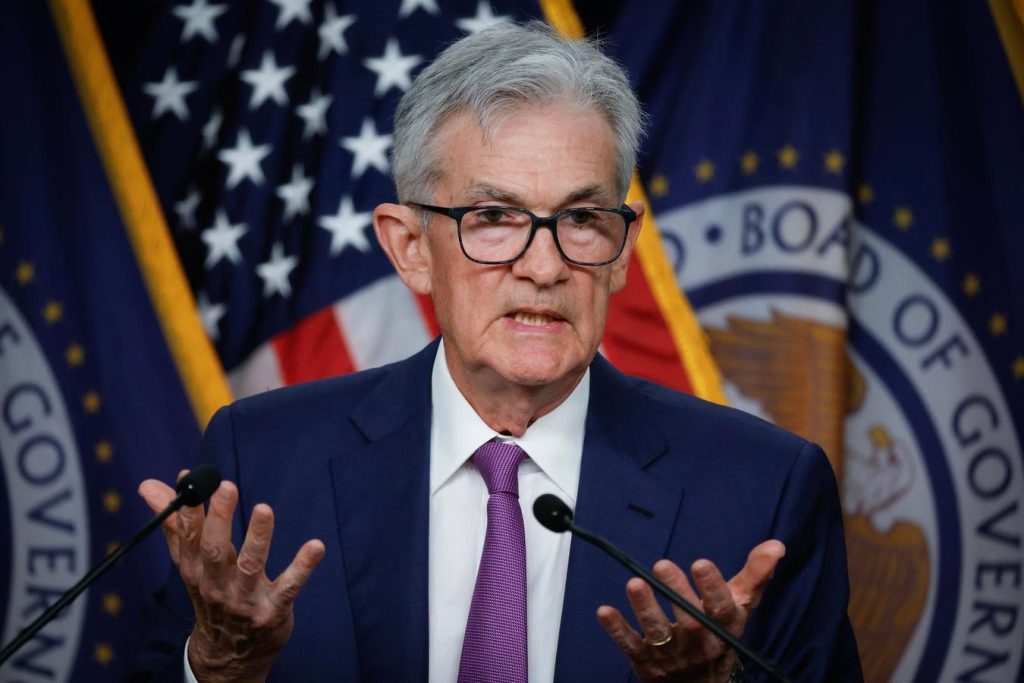Paragraph 1: The December 2024 Fed Decision and Market Reaction
The Federal Reserve, on December 18, 2024, announced a 0.25% reduction in the federal funds rate, setting the target range between 4.25% and 4.50%. This decision, while largely anticipated by market observers as indicated by the CME FedWatch Tool, carried significant implications for future monetary policy. The market’s focus, however, was divided between the immediate rate cut and the Federal Open Market Committee (FOMC) projections regarding the trajectory of future interest rates and overall economic conditions. The subtle shift in the Fed’s stance, as reflected in the accompanying FOMC forecasts, generated considerable interest and speculation within financial markets.
Paragraph 2: Balancing the Dual Mandate Amidst Economic Uncertainties
The Federal Reserve operates under a dual mandate: to promote maximum employment and maintain price stability. The December rate cut occurred against a backdrop of a relatively robust labor market, but persistently elevated consumer inflation. This complex economic environment presented the Fed with a delicate balancing act. Cutting rates too aggressively could exacerbate inflationary pressures, while maintaining a restrictive monetary policy risked dampening economic growth and potentially impacting employment. The 0.25% reduction reflected the Fed’s attempt to navigate this challenging scenario, opting for a cautious approach that acknowledged both the strength of the labor market and the need to address inflationary concerns.
Paragraph 3: Decoding the FOMC Forecasts and the Dot Plot
Beyond the immediate rate cut, market participants eagerly awaited the release of the quarterly FOMC forecasts, particularly the median projections for future interest rates. These forecasts, presented in a tabular format alongside projections for GDP growth, PCE inflation, and unemployment, provided valuable insights into the committee’s outlook for the economy. Of particular interest was the "dot plot," a graphical representation of anonymized individual FOMC member forecasts of future interest rates. This visual tool allows for a nuanced understanding of the range of views within the committee and the overall direction of monetary policy expectations.
Paragraph 4: Shifting Expectations: A Comparison with September Projections
The December dot plot revealed a notable shift in the FOMC’s expectations for future rate cuts compared to the projections released in September 2024. While the committee still anticipated further rate reductions in 2025, 2026, and 2027, the December projections pointed to fewer and slower cuts than previously anticipated. Specifically, the median forecast for the end of 2025 was revised upward to 3.9% from 3.4%, the end of 2026 to 3.4% from 2.9%, and the end of 2027 to 3.1% from 2.9%. This upward revision signaled a less dovish stance than previously communicated, suggesting that the Fed perceived a reduced need for aggressive easing in the coming years.
Paragraph 5: Economic Outlook: Growth, Inflation, and Unemployment Projections
The FOMC’s projections for real GDP growth remained generally positive, despite the upward revisions to interest rate expectations. However, inflation, measured by the Personal Consumption Expenditures (PCE) index, was expected to remain above the Fed’s 2% target until the fourth quarter of 2027. The median Q4 2025 year-on-year PCE and Core PCE inflation expectations were raised to 2.5%, up from 2.1% and 2.2% respectively in the September projections. This indicated a potential challenge in bringing inflation back to the desired level. On a more positive note, the unemployment outlook improved slightly, with the median Q4 2025 unemployment rate forecast lowered to 4.3% from 4.4%.
Paragraph 6: Market Implications and the Importance of Ongoing Communication
The December FOMC projections, with their indication of fewer rate cuts than previously anticipated, were likely to influence financial market dynamics. The upward revision in interest rate expectations could lead to a rise in the dollar and bond yields, while putting downward pressure on bond prices, equity prices, and industrial commodity prices. However, it’s important to recognize that the December decision is just one point in the ongoing evolution of monetary policy. Market participants will continue to closely monitor incoming economic data and statements from Fed officials, particularly those of Fed Chair Jerome Powell, for further insights into the central bank’s thinking. This ongoing communication plays a crucial role in shaping market expectations and influencing investment decisions. The interplay between Fed policy and market reactions will remain a focal point for economic analysis in the coming months.

